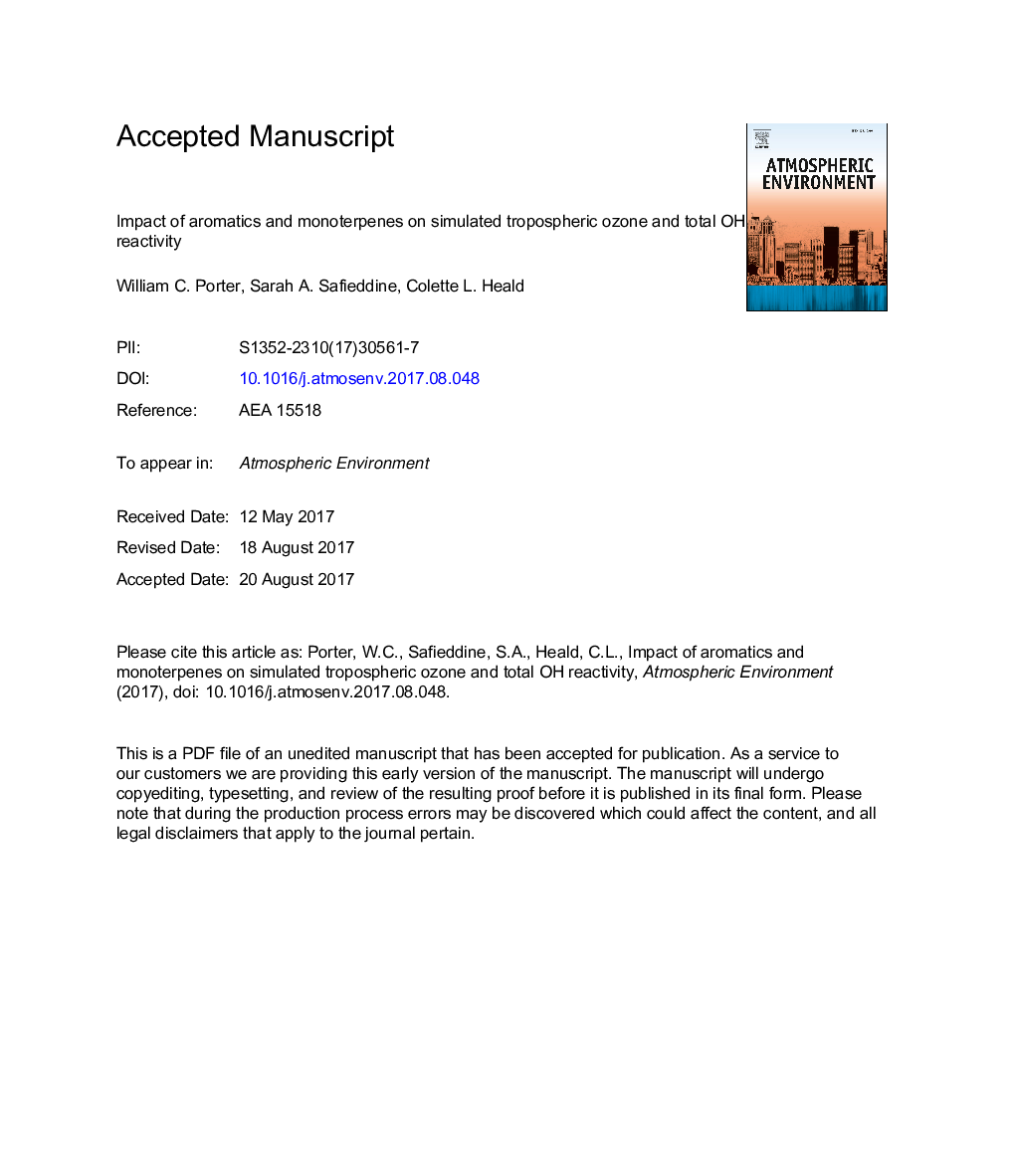| Article ID | Journal | Published Year | Pages | File Type |
|---|---|---|---|---|
| 5752818 | Atmospheric Environment | 2017 | 18 Pages |
Abstract
The accurate representation of volatile organic compounds (VOCs) in models is an important step towards the goal of understanding and predicting many changes in atmospheric constituents relevant to climate change and human health. While isoprene is the most abundant non-methane VOC, many other compounds play a large role in governing pollutant formation and the overall oxidative capacity of the atmosphere. We quantify the impacts of aromatics and monoterpenes, two classes of VOC not included in the standard gas-phase chemistry of the chemical transport model GEOS-Chem, on atmospheric composition. We find that including these compounds increases mean total summer OH reactivity by an average of 11% over the United States, Europe, and Asia. This increased reactivity results in higher simulated levels of O3, raising maximum daily 8-h average O3 in the summer by up to 14 ppb at some NOx-saturated locations.
Related Topics
Physical Sciences and Engineering
Earth and Planetary Sciences
Atmospheric Science
Authors
William C. Porter, Sarah A. Safieddine, Colette L. Heald,
